Top Five Tools Pro Gardeners Count On
Inside information on the best tools in the landscaping business
As a professional gardener, I have different criteria than most for what makes a good tool. After all, my tools have to hold up to 40-hour workweeks in the garden. What's more, they need to be ergonomically-designed so that I can hold up, too!
While many people tout tools with beautiful design or an array of kicky colors, I care more about function than looks. Is it lightweight and easy to use so that I don't get tired while using it? Can it perform multiple jobs so that I don't need to run back and forth for each new task I do? And most importantly, will it last for years of full-time gardening, or will it fall apart after a few short months?
These five tools have stood the test of time for me and my employees, and I never go into a garden without them.
Stainless Steel Hori-HoriWhen it comes to weeding and planting annuals, most people reach for a trowel. But the trowel's scoop-like shape and dull edges mean that you use a lot of effort to dig in hard soils, and forget about plunging it into the lawn to go after dandelion roots; it simply won't do the job.
That's why Japanese gardeners use a hori-hori, or soil knife. It's got a sharp, straight blade with a smooth knife edge on one side, and a serrated blade on the other. Unlike a kitchen knife, it's made for digging in soil, so it's sturdy and strong. It slices through soil and makes short work of weeding and planting annuals or vegetables.
Not only that, but they reduce bulb planting to a simple matter of "stab, wiggle and drop". Stab the hori-hori into the soil, wiggle it back and forth, drop your bulb in, and move on. Many brands even come with a ruler stamped onto the blade so you can know how deep to plant each bulb.
It's a great multi-purpose digging tool that can be used for dividing perennials, cutting weed mat, planting, and weeding. Once you try it, you won't go back to a boring old trowel.
Radius Garden PRO ShovelAh, shovels. Those rusty, maltreated standbys of the garden. You need one, that much is clear. How else will you dig planting holes, divide perennials, and move soil? But most shovels are a tool we own out of necessity, not love.
The Radius Garden PRO Shovel
It has a pleasant heft to it, too. I wouldn't call it heavy, exactly, but it has enough weight that once positioned, it slides cleanly into the soil and helps you get the job done. The shaft is polypropylene (for a smooth feel and light weight) molded over a steel tube (for strength), so it won't rot, bend, or break even in rocky or clay soils.
Best of all, the ergonomic o-ring handle gives you the perfect grip, no matter your height. You can hold the shovel one-handed, two handed, from the sides or the top, and it has a non-slip texture for good control.
Fiskars 62" Pruning StikMost pole pruners fail because they try to do too much. They extend to superman heights, need a long, looping rope to close the oversized blade, and have a saw attachment that is hard to maneuver from 12' below. While these features may seem like a good thing, they add up to create a heavy, frustrating tool that everybody dreads using.
The Fiskars 62" Pruning Stik stands in delightful contrast. Weighing in at less than two pounds, this streamlined tool allows you to prune tall shrubs, vines, and small trees with ease. The lopper head is adjustable, so you can prune from any angle that's comfortable. And the rope is flat and completely encased in the handle, so it's impossible to get it stuck in a tree.
Because it's so lightweight, it's perfect for those marathon pruning days in late winter. It even works well as a no-bend gardening tool for thinning dogwoods or cutting tree suckers to the ground. While there's no saw, I consider that a good thing, as I've never seen anyone make a horticulturally-correct cut from so far below.
Speedy Sharp SharpenerThis pocket-size tool makes short work of sharpening pruners, loppers, hori-horis and more. A sharp set of pruners makes pruning feel effortless and fun, but many of us put off this task until we're pruning with dull, rusty blades.
And no wonder! If you've ever tried to sharpen with an old-school file, you know they can be bulky and time-consuming to use. They are big enough that they don't fit easily between small hand pruner blades, and the number of swipes it takes to sharpen makes this simple task seem tiresome.
The Speedy Sharp is the solution. It's made of super-strong carbide, so it takes only a few swipes to put a fresh edge on hand pruners. And the small size fits into your pocket for quick touch-ups during long days of pruning. It's a cheap way of feeling like you have a fancy new set of tools.
Bahco Hand PrunerI've saved the best for last. While most gardening magazines tout the red-handled Felcos as the ultimate badge of a serious gardener, professionals know better. The Bahco brand is a European line of cutting tools that puts those wimpy Felcos to shame.
First, the cutting blade on my Bahcos needs sharpening less often then my old Felcos did. Bahco uses a stronger metal and a Xylan coating to slice through stems with ease. They're also loaded with ergonomic features. The curve of the handle lets you cut bigger stems with less effort, while a slight tilt to the blade keeps you from tweaking your wrist.
Best of all, they're fully customizable. You can get the handle size that suits your measurements, and the blade size best suited to the type of pruning you do most often (large blade for big jobs, and a smaller blade for perennial and rose deadheading). You can select from a rotating handle or a left-handed version, too.
There are economical versions with no replaceable parts (PG-line) as well as professional-grade models that can be replaced bit by bit (PX-line). If you've ever suffered wrist or hand strain after pruning, or just think it's time to stop fiddling with inferior tools, definitely check out the Bahco line of pruners.
Good Tools Make Gardening FunThe pleasures of a well-designed set of gardening tools can't be overstated. Not only can they keep you from hurting yourself, but a well-made tool feels almost like an extension of your body, allowing you to focus on the task at hand and lose yourself in the enjoyment of caring for your plants.
|
Contributing Author: Genevieve Schmidt, contributing writer for Landscaping Network and owner of North Coast Gardening |



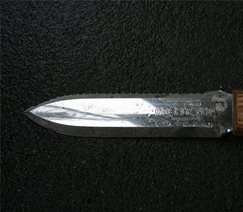
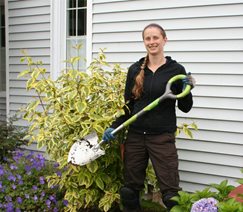
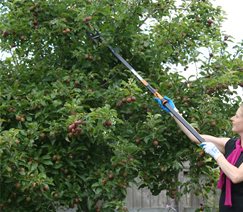
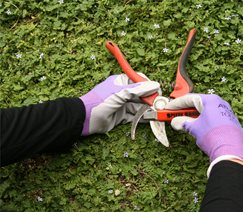
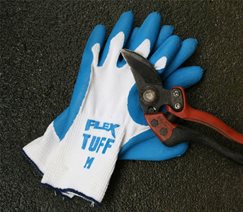
 Gardening Ideas
Gardening Ideas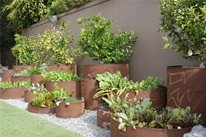 Vegetable Garden Design
Vegetable Garden Design Choosing Containers
Choosing Containers

